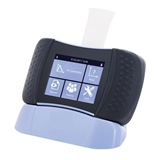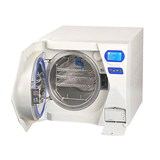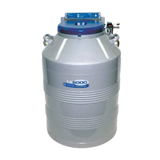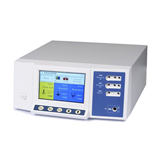Learn how to choose the best gynaecology colposcope in Australia. Understand compliance standards, key features, and expert buying advice for medical practices.
Key takeaways
- Prices: Expect to pay between $2,500 and $18,000+ for a colposcope in Australia, depending on features, optics, and digital capabilities.
- Types: Choose from optical, digital, and video colposcopes, each suited to different clinic sizes and diagnostic needs.
- Compliance: Must comply with TGA regulations, AS/NZS ISO 13485, and IEC 60601-1 safety standards.
- Maintenance: Annual service costs typically range from $400 to $800, with LED light source replacements every 5–7 years.
- Financing: Medical equipment financing in Australia can start at 4.9% p.a., with options including leasing and chattel mortgages.
- Warranty: Most colposcopes come with a 2–5 year manufacturer’s warranty, with optional extended service plans available.
- Key features to compare: Magnification range (typically 3–20x), light source (LED preferred), video output, camera resolution, and ergonomic adjustability.
- Market insight: The Australian colposcopy market is projected to grow at 5.2% CAGR (2024–2028), driven by increased screening programs and early diagnosis initiatives (IBISWorld).
Introduction
If you’re looking to invest in a gynaecology colposcope for your practice or medical facility in Australia, choosing the right equipment is essential for ensuring accurate cervical screenings, patient comfort, and long-term value. With new technologies like HD digital imaging and telecolposcopy gaining ground, navigating the price points, specifications, and compliance requirements can be overwhelming.
This comprehensive buying guide will walk you through the various types of colposcopes available in Australia, what they cost, how they operate, maintenance and parts expectations, financing options, compliance requirements, and more — so you can make a confident and informed decision.
Types of gynaecology colposcopes
Understanding the types of colposcopes available is crucial for selecting the right one for your needs. These are the three main types:
Optical colposcopes
- Traditional design using binocular eyepieces.
- Reliable and widely used in clinical settings.
- Manual focus and magnification adjustment.
Best for: Clinics with steady patient throughput needing high-quality optics without digital integration.
Digital colposcopes
- Feature a digital camera and LCD display.
- Offer image capture, video recording, and software integration.
- Often come with USB/HDMI output for documentation and telehealth.
Best for: Modern clinics with EMR integration and documentation needs.
Video colposcopes
- Full video display with no eyepiece.
- Ergonomically superior, often used for teaching or telemedicine.
- Integrated image enhancement and auto-focus capabilities.
Best for: Hospitals, teaching institutions, and advanced diagnostic settings.
Gynaecology colposcope prices in Australia
The cost of a gynaecology colposcope in Australia varies depending on the type of unit, its features, and the level of imaging or digital integration. Here’s what you can generally expect:
- Optical colposcopes are the most cost-effective option, typically priced between $2,500 and $9,000. These models use traditional binocular viewing and manual adjustments and are suitable for clinics seeking reliable performance without advanced imaging features.
- Digital colposcopes offer enhanced functionality, including digital image capture, on-screen displays, and connectivity for documentation. Prices usually range from $8,000 to $15,000, making them ideal for clinics integrating digital workflow and patient records.
- Video colposcopes represent the premium end of the market. These systems provide high-definition video output, improved ergonomics, and often include features like auto-focus and on-screen annotations. Prices generally fall between $12,000 and $18,000 or more.
Tip: Be aware that base prices may not include essential accessories like LED monitors, software licences, foot controls, or mobile stands. Request a full itemised quote from suppliers to understand the total cost of ownership.
Operation and clinical workflow
Colposcopes are used for magnified visual examination of the cervix, vagina, and vulva, typically during Pap smear follow-ups or when abnormal cervical changes are suspected.
Typical features to look for:
- Magnification levels: Usually 3x to 20x.
- Light source: LED preferred for long life and minimal heat.
- Camera resolution: Full HD or 4K for digital models.
- Image capture: USB, SD card, or network storage.
- Stability and mobility: Floor stand, swing arm, or wall-mount options.
Workflow efficiency tips:
- Ensure foot pedal controls for hands-free operation.
- Integrate with EMR systems for automatic documentation.
- Use on-screen annotation tools during patient consults.
Maintenance and spare parts
Keeping your colposcope in top working order requires proactive maintenance.
Routine maintenance includes:
- Annual inspection and calibration.
- Cleaning and dust removal from optics.
- Firmware/software updates for digital models.
Replacement part costs (approximate):
- LED light source: $300–$700 (lasts 5–7 years).
- Camera sensor/module: $800–$2,000.
- Control board or monitor: $1,000–$2,500 for high-end models.
Tip: Some parts have long lead times. Ask suppliers about availability when purchasing.
Financing options in Australia
Given the capital investment, many clinics opt for medical equipment financing.
Common financing routes:
- Chattel mortgage: Own the asset and claim depreciation.
- Finance lease: Lower upfront cost; return or purchase at term end.
- Medical equipment loans: Fixed terms and competitive interest.
Rates and terms:
- Interest rates from 4.9%–7.5% p.a.
- Terms from 1 to 7 years.
- GST and depreciation benefits for ABN holders.
Warranty and service contracts
Colposcopes generally come with:
- Standard warranty: 2–5 years.
- Extended warranties: Available for additional 10–15% of product cost.
- Service contracts: Offer preventative maintenance and priority servicing.
What to look for in a warranty:
- Inclusions (labour, parts, transport).
- Loan unit availability during servicing.
- Australian-based technical support.
Choosing the right colposcope for your clinic type
Matching your colposcope to your clinic’s needs is key to getting value for money and clinical efficiency. Here’s a quick guide based on common Australian settings:
Solo GP or general practice
- Best choice: Optical colposcope
- Why: Affordable, reliable, and ideal for occasional exams.
- Cost: $4,500–$9,000
- Tip: Prioritise optical quality and ease of use over advanced features.
Women’s health or gynaecology clinic
- Best choice: Digital colposcope
- Why: High-resolution imaging, on-screen display, and EMR integration.
- Cost: $8,000–$15,000
- Tip: Look for built-in image capture and compatibility with your clinic software.
Hospital outpatient or teaching facility
- Best choice: Video colposcope
- Why: Real-time display for teams and teaching, with advanced imaging features.
- Cost: $12,000–$18,000+
- Tip: Ensure HDMI/USB outputs and DICOM support for integration.
Mobile or outreach services
- Best choice: Portable digital colposcope
- Why: Compact, lightweight, and suitable for remote or off-grid use.
- Cost: $7,000–$12,000
- Tip: Opt for a rechargeable or battery-powered unit with durable design.
Tip: Choose based on your workflow, patient volume, and whether digital documentation or portability is essential.
Compliance and certification in Australia
Your colposcope must meet strict Australian regulations to be legally and safely used in clinical practice.
Regulatory standards:
- TGA (Therapeutic Goods Administration) registration.
- IEC 60601-1: Electrical safety standard for medical equipment.
- AS/NZS ISO 13485: Quality management for medical devices.
- ARTG (Australian Register of Therapeutic Goods) number confirmation.
Buying checklist:
- Ask for the ARTG number from the supplier.
- Request the Declaration of Conformity.
- Ensure user manuals and labelling are in English and locally approved.
Purchasing non-compliant devices risks fines and insurance non-coverage.
Frequently asked questions (FAQs)
Q1: What’s the difference between a digital and optical colposcope?
A digital colposcope has a built-in camera and screen for display and image capture, while an optical one uses binocular lenses and requires manual viewing.
Q2: Can colposcopes be used for telehealth or remote diagnosis?
Yes. Modern digital and video colposcopes can stream examinations securely to specialists, making them suitable for telecolposcopy programs — especially useful in remote or regional Australia.
Q3: How often should I service my colposcope?
Annual servicing is recommended, with more frequent checks for high-use environments. Digital units may also require occasional firmware updates.
Q4: Can I claim my colposcope purchase as a tax deduction?
Yes, under temporary full expensing (until 30 June 2025), eligible businesses can fully deduct the cost of eligible assets. Speak to your accountant for tailored advice.
Q5: Is training required to use a colposcope?
Yes. While the device is user-friendly, proper training ensures accurate interpretation and safe usage. Most suppliers offer onboarding and staff training.
Conclusion
Investing in a gynaecology colposcope is a strategic decision that impacts clinical quality, operational efficiency, and patient trust. Whether you're outfitting a new women’s health clinic or upgrading outdated equipment, understanding the full spectrum of costs, types, maintenance requirements, compliance needs, and financing options will put you in the best position to choose wisely.
For optimal results, always buy from reputable Australian suppliers who offer post-sale support, certification documentation, and service contracts. With the right setup, your colposcope can deliver years of reliable performance and clinical accuracy.









-160x160-state_article-rel-cat.png)













